A final report on my recent research and travels in India.
After weeks of hallucinatory and ravishing beauty in remote Rajasthan, and the seduction of history and heritage at the Rambagh Palace—I’m ready for the shock of the new.
This week I’m reporting on my two-day visit to New Delhi before heading back to California.
I stayed at The Lodhi hotel, it’s chic modern architecture perfectly framed by the green Lodhi Gardens neighborhood.
On this trip, detailed over the last three weeks, I had traveled many hundreds of miles in Rajasthan. I chose The Lodhi for its tranquility and its calm demeanor. It feels like a superbly managed private hotel.
I wanted repose, privacy, and the charming person-to-person approach to service that general managers Robyn Bickford and her husband Manav Garewal have created.
I’m at the end of a richly inspiring sojourn in India, and the hotel offers the solace of art, light, and simplicity. There’s no lobby scene—no fanfare. A lovely personal experience.
Come with me for a first look—and prepare to be surprised.
India Tips:
At the end of this report, at the request of many friends and readers, I’ve added detailed Tips for traveling to India. I detail the best time to travel, where to go, how to do it, and how to plan it.
Many of my dear readers have told me they are now inspired to travel to India (as one reader commented, “India was not on my list of ‘where to travel next’ and now it is at the top of the list’.)
Read down to find my tips, thoughts, ideas and suggestions about planning a first trip—and where to go in India.
Book List:
At the request of my dear reader, Julieta, in Georgia, I’ve included a detailed book list. I have a library of books on India, and the details and research you’ll discover here will add immeasurably to your trip and understanding and appreciation of India.
On this trip, detailed over the last three weeks, I had traveled many hundreds of miles in Rajasthan. I chose The Lodhi for its tranquility and its calm demeanor. It feels like a superbly managed private hotel.
I wanted repose, privacy, and the charming person-to-person approach to service that general managers Robyn Bickford and her husband Manav Garewal have created.
I’m at the end of a richly inspiring sojourn in India, and the hotel offers the solace of art, light, and simplicity. There’s no lobby scene—no fanfare. A lovely personal experience.
Come with me for a first look—and prepare to be surprised.
India Tips:
At the end of this report, at the request of many friends and readers, I’ve added detailed Tips for traveling to India. I detail the best time to travel, where to go, how to do it, and how to plan it.
Many of my dear readers have told me they are now inspired to travel to India (as one reader commented, “India was not on my list of ‘where to travel next’ and now it is at the top of the list’.)
Read down to find my tips, thoughts, ideas and suggestions about planning a first trip—and where to go in India.
Book List:
At the request of my dear reader, Julieta, in Georgia, I’ve included a detailed book list. I have a library of books on India, and the details and research you’ll discover here will add immeasurably to your trip and understanding and appreciation of India.
The Lodhi, New Delhi
On the map: I am in far Northern India, and on the western banks of the sacred Yamuna River.My first impression of the hotel is that an austere and highly refined architectural sensibility is at work here.
Pared down and uncompromising, the walls of honed ivory-colored stone are reminiscent of the pale, perfect, pure exterior walls of the Taj Mahal.
And yet The Lodhi (formerly the Aman Delhi) is sleek, and Meier-modern, and feels harmonious, ethereal, intelligent, and very understated.
I arrive from the airport, after flying in from Jaipur. The hotel is a retreat, invisible from Lodhi Road, and arrival there is smooth, welcoming and beautifully choreographed by resident manager, Manish Sharma, and Hamada Singh, front office manager.
My butler accompanies me to my room. We quickly complete formalities, and he asks if I would like a chilled pomegranate drink, a favorite from my previous visit. Yes, please.
He returns a few moments later, fresh juice on a tray, and a newly burned CD of raga music on hand. He notes that we had earlier discussed my interest in Indian traditional musical instruments. Very thoughtful.
The hotel architect and designer is Australian Kerry Hill, based in Singapore and Western Australia. He is a master of his craft. It feels India modern, and 21st-century with deft control. Delhi without a trace of nostalgia.
In the suite, a graceful bedroom has an entirely efficient series of adjacent wardrobes, luggage stands and dressing tables. Everything in the right place. The scent of fresh tuberoses wafts into the air.
The décor has been refreshed, and is now light and airy, in soft off-white tones with a delicate accent of palest turquoise. It’s under-stated, and does not call attention to itself. There are comfortable armchairs (‘a chair of one’s own’ as general manager Robyn Bickford notes) and pleasant sofas. Everything is where it should be.
For the top four floors, there is a plunge pool in each room, a terrace for breakfast. There is also an a la carte restaurant, and Elan Restaurant and bar. The all day Pool Cafe is restricted to hotel guests and club members. OTW (On The Waterfront), opens noon with an air-conditioned glassed-in jetty for private parties/dinners.
The utterly silent spas for men and women offer a Turkish hammam steam bath, and plunge pools. The garden relaxation area is the perfect location for long-distance travelers to lie in the sun, breath fresh air, and recalibrate circadian rhythms.
I am here. I am in India. Today’s India
It’s late and I’ve had a long day, departing from the Rambagh Palace, the flight to Delhi, a 30-minute drive from the airport to The Lodhi.
I decide to stay in, catch up with messages and work, and enjoy a light salad on the terrace.
“When I first arrived in New Delhi in 1984, I used to slip out and explore. I would take a rickshaw into the innards of the Old City and pass through the narrowing funnel of gullies and lanes, alleys and cul-de-sacs, feeling the houses close in around me. In particular, what remained of the 18th-century palace of the last Mughal, Bahadur Shah II, the Red Fort of the Great Mughals, kept drawing me back. I would often slip in there with a book and spend whole afternoons in the shade of a cool pavilion. Delhi’s relationship with its past continues to intrigue me.” — from 'The Last Mughal’ by William Dalrymple (2006)
Architect, Kerry Hill on the design of The Lodhi, New Delhi:
“We referenced past building traditions through suggestion and association rather than replication, and through the reinterpretation of indigenous building forms as opposed to mimicry.”
“We prefer to build upon what is there and to contemporize our understanding of what it can be. I think of our design for The Lodhi New Delhi as being current, but filtered through a sieve of traditional values.”
There are just forty suites/rooms set away from traffic noise. Arrivals and departures are discreet, and the hotel feels more like a private club than a hotel.
“I am here now.”
It’s lovely to have a quiet evening. Time to think, plan, review the trip.
I complete notes, and decide to enjoy a swim, and turn in early.
From my terrace, there’s a darkening green view over gardens and trees and Humayan’s Tomb in the sunset distance. The architecture of 1580s Humayan’s Tomb is said to have inspired the 1631 Taj Mahal (domes, minarets, symmetry) though both are classically Persian in style. I will visit in the morning.
My favorite amenity of my top-floor room is the pool, designed to be both indoors and open to the panoramic Delhi view.
The 5-foot deep plunge pool, which measures a beautifully symmetrical 14 x 16 feet, is modeled after traditional stepwells on Northern India, and crafted of smooth hand-hewn sandstone blocks. From the sandstone terrace (with a raised chaise longue) steps lead down into the water.

I step down into the water. It’s up to my shoulders, I am floating. The water feels, magically, 98.4 deg F…and soft and smooth.
I drift, I feel as if there is a current, pulling me along slowly, very Ganges, very tranquil., very quiet. Out beyond the terrace, I can see the dome of Humayans Tomb, lit up, appearing to hover above the dark trees. Stars appear in the darkening sky.
I think about my India journey—criss-crossing Rajasthan, heading out into the unknown, and finding life untouched, it seems, by the 21st century. Tribal villages and tribal life continue. Stepwells. Women in shocking pink saris sparkling with embroidery and sequins herd goats. A man with the most handsome red turban leads his shorn sheep out to pasture. All is peaceful.
I will continue to explore, and to travel to places that are pure discovery.
Onward.
Beside my bed is a silver vase of fresh tuberose stems. Their heady scent wafts me off to sleep.
A Gentle Day in Delhi
Breakfast arrives. Assam tea, tart/sweet tropical fruit, including jackfruit and papaya. I requested wheat toast and house-made orange marmalade. From the terrace, I can see that the day is warming up.I read the Times of India. Linger. It’s so peaceful here.
In previous visits to Delhi, I’ve visited the Red Fort with an architecture professor, traversed Chandni Chowk on a cycle rickshaw (rickety, indeed), and toured Lutyens’ Delhi. I’ve seen all the noble and significant architecture. I’ve visited museums and historic residences. Now I have just a day.
Robyn Bickford, the general manager, suggests that I pay a visit to nearby Humayun’s Tomb. It has recently been restored, the grounds revived. The tomb was commissioned by Humayun's first wife Bega Begum in 1569-70, and designed by Mirak Mirza Ghiyath, a Persian architect. It was the first garden-tomb on the Indian subcontinent, and is located in a fascinating and historic neighborhood, Nizamuddin East.
The Art Gallery and Aparao Art Collection
On my visit to India I discovered the striking new contemporary art collection on display at The Lodhi.There are superbly curated iconic sculptures and paintings. It’s a new culture venue, rare for a hotel in New Delhi, as well as a subtle way to encounter nonchalant, and vivid contemporary Indian art.
The collection, an art lover’s dream and paradise, is the bold and triumphant creation of the joint general managers of the hotel, Robyn Bickford (a New Zealand native, formerly in the diplomatic corps), and her husband Manav Garewal, in collaboration with Sharan Apparao and the Apparao Galleries in Chennai and Delhi (see information below).
The Lodhi art exhibits have been extended over the 6-acre property, with steel sculptures in the gardens, a golden sacred cow in a sitting area, a range of conceptual pieces on a stairway, and paintings on the walls of the restaurant. All are for sale.
“Guests and visitors are loving it and we achieve many sales,” said Bickford. “I often founf guests having their photograph taken with the Reddy goddess. Our sandstone elephant at the entrance is not so happy about this as he was always the feature.”
Sharan Apparao, from the Apparao Galleries in Chennai, places the exhibitions in the hotel and is a respected authority on contemporary Indian art. Apparao has many international clients and is a favorite with the art-loving Indian diaspora. Contemporary art hangs in guestrooms. Dramatic sculptures grace the gardens. For many visitors, it is an exciting and first-class education on the best of Indian art.
The Great Find: Kashmir Loom
Robyn Bickford also suggested that I would enjoy meeting Jenny Housego, the owner of Kashmir Loom, and seeing the company's fine cashmere, silk, wool and cotton textiles made for the Indian and international markets. Many cashmere connoisseurs consider the company's shawls and blankets to be the finest available.Kashmir Loom was created by Jenny Housego and her Kashmiri partners, brothers Hamid, Zahid, and Asaf Ali, and their family in Srinagar, Kashmir.
Robyn made an appointment for me to meet Jenny, who is English and lives in New Delhi. She was formerly a textile historian, and worked at the Textile Department at the Victoria and Albert Museum in London.
I arrived at the Kashmir Loom showroom, and Jenny showed me her newest designs. The company makes the most exquisite traditional shawls and scarves in handspun and hand-loomed cashmere, AND has also pioneered the use of shimmering metallic threads in handwoven shawls (see images). The quality of the textiles is the best I’ve seen in India. The company offers embroidered shawls in very fine natural undyed handspun cashmere (think taupe cashmere with exquisite borders of contrasting silks)—as well as rainbow-bright shocking pink, turquoise, magenta, and indigo shades to brighten a winter day.
Kashmir Loom shawls and scarves are available at Barney’s New York stores around the US, and at many international stores and boutiques.
By appointment only: Retail
C-65, Basement, Nizamuddin East, New Delhi 10013 India
Phone: +91.11.2431.8947, 4058.8650.
www.kashmirloom.com
India Travel Tips
Many of my readers have let me know that I’ve inspired then to travel to India. Here are some tips and thoughts:When
The best time to travel there is from October—March. From April—September it is very hot, and summer is the monsoon season.
Where
India is a vast, diverse, diverting, and fascinating country. It encompasses the hippie beaches of Goa, the Himalayan range, mystical forests, cyber-cities like Hyderabad, and small rural towns (like Narlai which I introduced you to last week), and Maheshwar in Indore (which I wrote about last year). It’s Kolkata (densely populated), and Kochi spice trading center), and the inland waters of Kerala…for a start.
India offers the romance and history of Rajasthan and the beaches of southern India, the mysticism and French colonial history of Pondicherry. I’ve traveled to all of these regions (and many more). I recommend them all. So the key issue is ‘what do you want to do’? Do you want to study textiles, attend a yoga retreat, drive from one historic town to the next, or lie around in a hippie haze on a chic Goa beach? Are you interested in buying antiques and rugs and textiles—or simply seeing the highlights?
If you are traveling to India alone or with a friend, for the first time—you may wish to research specialist groups that conduct study tours (museum groups, university groups, art groups, the Institute of Classical Architecture, Sr. John Soane Museum (London) for example), and many international art organizations plan excellent and focused tours. Highly recommended.
Festivals and fairs
Throughout the year, India celebrates with religious and seasonal festivals, as well as camel fairs, pilgrimages, and major celebrations like Holi (spring) and Diwali (fall). There is also the winter marriage season, a time astrologers deem to be most ‘fortuitous’ and auspicious. Pushkar camel fair is held every November. Check upcoming dates— attuned to full moons, the constellations, and tradition. All of the festivals are a rich and exciting part of Indian life, tradition and offer views into the culture.
Golden Triangle
I note that often travel agents propose the classic ‘Golden Triangle’ experience of Agra (Taj Mahal) and Jaipur/Jodhur and Delhi for a week/10 days tour. While this concept offers a quick first taste of India, it is my impression that a bespoke private tour will avoid this ‘half-a-day in Jaipur’ concept. Instead, discuss with an India travel expert a Rajasthan tour taking in both small village heritage hotels and elegant hotels. Or, consider Ahilya Fort, a heritage hotel in a 15th century Indore fort, that is in a complex of temples and in a region with many heritage sites. A week there would be a dream--spring and fall.
Some plans to research
Rice boats in Kerala. A yoga retreat followed by a few days shopping for textiles and silver jewelry in Jaipur. Architecture studies (Lutyens and Mughal) in Delhi. Tea plantations in the south. Pondicherry to study French colonial architecture and traditions. A spiritual journey at an ashram. Yoga and spa. Beaches and clubs in Goa. Portuguese history in Goa. Marwari horse trekking in the Thar desert. Volunteering with a charitable group. Teaching. Studying. Birdwatching in Rajasthan. Tigers in a reserve. Hiking in Ladakh. Studying Buddhism. Following Sufi mystics. Reading and surfing on a Kovalam beach.
For just a start.
Notes
I’ve traveled in every possible conveyance including third-class railway carriages, rice boats, a canoe on the Ganges, cycle rickshaws, bicycles, cars with no air conditioning, private planes, buses with no air conditioning, prop planes, and very pleasant air-conditioned four-wheel drives (to explore remotest areas of Northern Rajasthan), and Jeeps and elegant trains. Each is an experience to be savored and recalled. Consider.
Indian food can be glorious. I am a vegetarian, and eat no meat at all or fish, at home or in India. Vegetarian Indian food is healthy and delicious—and Indians you encounter will be amazed and happy. (“You’re a vegetarian in California, too?” they ask in amazement.)
Before setting out:
Make an appointment for a consultation at a specialized travel clinic. Gather all the information you need regarding shots, precautions, regional concerns, medications and pills to take along. I keep all shots up to date, and get boosters when required.
I’m a healthy traveler. I sleep on the plane. I don’t get jet lag. (Check in THE STYLE SALONISTE archives for ‘Jet Lag’ information.)
Indian medical care can be world-class—but don’t assume that you can easily find a Band-aid or antiseptic cream or other over-the-counter products. I keep a ‘medical pack’ in my carry-on luggage with my personal selection of first aid—Ace bandages and headache remedies that I never end up using. I keep everything I might need packed at all times. And seldom open the kit.
Diane’s tips:
Sleep on the plane—so that you arrive fresh and hit the ground running.
Meet people. Make appointments at top art galleries. Meet experts. Chat to people you encounter. Most Indians—even five-year-olds—speak excellent English.
Traveling alone: stay in the nicest hotel you can find. Rely on the manager/concierge to take good care of you, find you an excellent driver, select congenial guides. I do.
Dress comfortably and elegantly. Indians appreciate polish and style.
Expect wonderful things. You will be overwhelmed and thrilled. Keep you eyes and ears open for a wedding procession with the groom on his bedecked white horse. You may encounter an elephant walking to a temple, a group of village women returning from the fields with their machetes and sickles.
As you know, it’s considerate to ask for permission before photographing women or babies and girls (everyone, really).
Travel well, be cheerful, be happy. You are in India.
Diane's Book List
This book list is dedicated to my dear reader, Julieta…who asked me to suggest some books on India, for lifelong learning.
Select a range of different guide books and study them in-depth. Focusing on one area--Kerala's inland waters, Goa beaches, Jain temples, safaris, music festivals--can produce dazzling tours.
I like the Eyewitness Travel Guides published by Dorling Kindersley, for the rich details of architecture and history and culture. Perhaps Rough Guide, Lonely Planet and Frommer are your style. Make these your study long before you start planning. They’ll help you focus and offer the kind of information (where, how, when, why not, and transportation details) that you should use to make prudent choices.
I have acres of books on India. I read biographies (Gandhi), history (Dalrymple’s volumes), memoirs (Pamela Hicks), and many Indian fiction writers (the Desai family, Lahiri) and many books on histories of the maharajahs and Indian life, culture, music, architecture and textiles.
I love the books of writers like V.S. Naipaul, as well as Amitav Ghosh, and Jhumpa Lahiri (writing about Indian expatriates in books like ‘The Interpreter of Maladies’)…her writing is exquisite. I also love Kiran Desai (“The Inheritance of Loss) and books by her mother, Anita Desai. And there are the charming writings of R.K Narayan.
You may find the following books of interest: (and of course, if you are going bird-watching or in search of antique textiles, you can easily find very specialized books on every topic.) These are a good start—in no particular order, but recommended highly for excellent background and insight and pieces of the pictures. Generally, the books I favor and have enjoyed are background, indepth learning, rich detail, research, factual information always written with grace, charm, wit.
‘City of Djinns’ by William Dalrymple (2003) is a vivid account of his first year living in New Delhi. He’s now become a favorite historian of the region’s great stories. Dalrymple’s nature is contrarian, and often dyspeptic, but he has a lovely admiration and intense interest/passion for Indian people and history.
‘The Last Moghul’ also by Dalrymple, offers the panorama of one of the last significant rulers and dynasties.
‘Passage to India’ by E.M. Forster (1924) paints a sympathetic and textured account of British/India encounters during the colonial period.
‘At the Court of the Fish-Eyed Goddess, Travels in the Indian Subcontinent’ by William Dalrymple (1998) is a wide-ranging series of essays on Indian life, culture, politics.
‘A Princess Remembers The Memoirs of the Maharani of Jaipur’ by Gayatri Devi (1996) sketches a romantic view of her childhood, subsequent marriage to the Maharajah of Jaipur, and jetset life. She founded schools for girls and a grade school in Jaipur, and was instrumental in protecting and fostering traditional fine crafts and arts of the region.
‘The Raj Quartet’ by Paul Scott. These are the books on which ‘Jewel in the Crown’, the hit PBS show, was based.) Scott’s writing is wonderfully accomplished and richly sympathetic to all of his characters.
‘Freedom at Midnight’ by Collins and LaPierre. Blockbuster, full of detail, research. A closeup view, with private and upclose knowledge of Gandhi's life and death. Must read.
‘Daughter of Empire: Life as a Mountbatten’ by Pamela Hicks (2011) offers insight into the last days of the Raj—and she was in the center of it all.
‘Indian Summer The Secret History of the End of Empire’ by Alex von Tunzelman (2009). I read this on the way to India, when it first came out. Her research is impressive, and it’s another slice of insight into this complex time of history.
‘Chasing the Monsoon’ by Alexander Frater (1998). Witty English writer sets off to follow the monsoon, one summer. Romantic and charming.
I know you’ll want to read them all.
Happy reading!
Finally—a poem by the great Indian/Bengali mystic/poet/writer Sri Aurobindo to send you on your way into the universe, into the day, into the unknown. Happy travels!
A Poem by Sri Aurobindo
Reminiscence
My soul arose at dawn and, listening, heard
One voice abroad, a solitary bird,
A song not master of its note, a cry
That persevered into eternity.
My soul leaned out into the dawn to hear
In the world's solitude its winged compeer
And, hearkening what the Angel had to say,
Saw luster in midnight and a secret day
Was opened to it. It beheld the stars
Born from a thought and knew how being prepares.
Then I remembered how I woke from sleep
And made the skies, built earth, formed ocean deep.
ESSENTIAL INFORMATION:
The Lodhi Hotel, Lodhi Road, New Delhi, phone from US 800-477-9180. Rates from $550. www.thelodhi.com. Information: [email protected]
Joint General Managers: Robyn Bickford and Manav Garewal
Art Gallery:
APPARAO GALLERIES, Chennai, Delhi and Bangalore.
[email protected]
[email protected]
Photo credits:
Hotel images courtesy of The Lodhi, New Delhi, used with permission.
Art images courtesy Apparao Galleries, with permission.






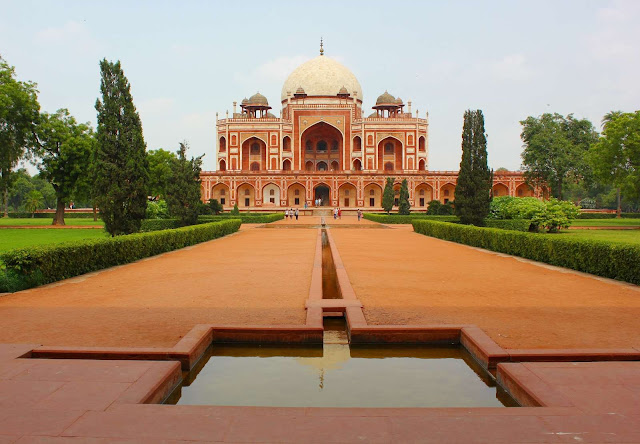
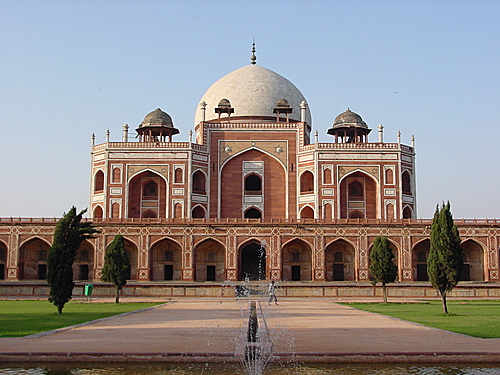




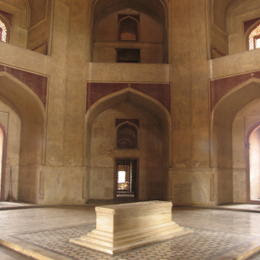


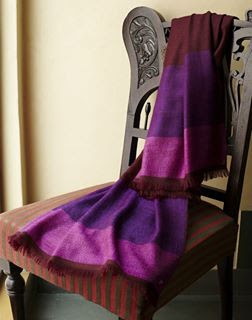

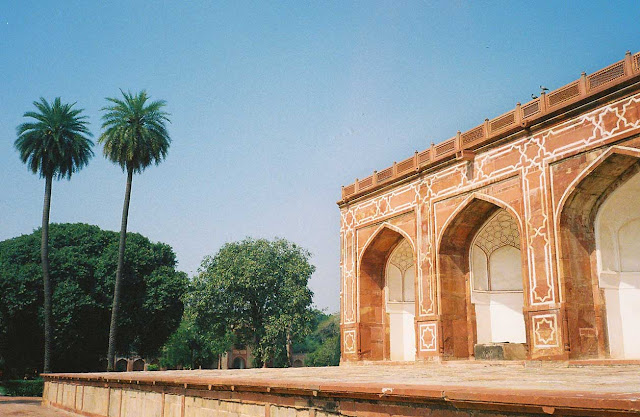
12 comments:
interesting to read thank you I really liked your article I love your beautiful blog and so enjoy your posts.good job
Dear Diane,
It has been such a pleasure to travel with you to India. It is now at the top of my list as my next destination with a stop in Morocco, another wonderful post of yours.
You travel the way I like to travel. Staying at the best hotels and taking advantage of all the amenities, including private cars and guides is the game changer between a good trip and an unforgettable one. The places you have shown us in this last "travelogue" are just out of this world. Can't wait to go. Before though I have a few books to read....
India is such a complicated place. It has always intimidated me perhaps because I know so little about it and there is so much to know. In order to really get the most out of a trip like this you need to get some history behind you. It's the only way to get a grasp on a country like this with such a diversity of classes and religions. Just by reading a sample of the first book you recommended I learned the difference between Mughal and Punjab...that's how green I am!
The books will be arriving soon, my daughter will be having a hissy fit (she says I already have too many, imagine) and before long I will be sending you a photo in front of the Taj Mahal in Agra!
Thanks again for all your help.
Julieta (Lindaraxa)
You brought me to India with your beautiful writing!
How lucky we are that you are so brave to go to these far-flung places........and describe them so beautifully (magnificently; actually!!)
You are my very favorite writer! When you were writing the book about "Santa Barbara"; and we talked in the airport, in the next airport.......about the beautiful article you did on our house we built!
This is what I though!
"I know "genius" when I see" genius"! And this is "genius"!!
And; with the publication of the very best book about Santa Barbara,,,,,,,,(yours is so way above the rest!)
Santa Barbara Living!
Best of the best!!
thank you for including me!!
You are brilliant beyond!!
Penelope
Where have I been?
This such a heavenly way to introduce India...
There's a book here for sure.
I love your hotel choices - so contemporary but it's been at 15 years ago since I was there and more for trips before that. November was a terrific time to go. I'll be reading this over slowly and carefully. You are so suited to India Diane. So many Americans are missing out..
Dear Diane,
I left you a long comment shortly after this was posted. Wondering where it went...
Thanks to your writing and beautiful photos I have enjoyed travelling through India like I never thought I would. Staying at the best places and taking advantage of all the resources like private cars and guides is definitly the game changer between a nice trip and a great one.
Books are already on order and knowing me I will plunge into India head on. Soon I will be posting the de rigeur photo of my picture in front of the Taj Mahal.
There is definitely a book here/another one on Morocco. Yours is such a unique perspective of India and a most enjoyable one.
Keep writing!
Julieta (Lindaraxa)
Dear Penny-
It is you ...the genius designer. Your house is one of the dreamiest in the world, and the life of generosity you live there is an inspiration.
You take care of Adam, your lovely family...and the ducks and chickens and wildlife...and protect them all with love.
Thank you for you enthusiasm and joy and the pleasure to take in life and each day. love DIANE
DEAR CAROL-
Thank you so much.
I love your blog, PARIS BREAKFASTS, and you take fun and enjoyment in offering insight into Paris.
For me...India is a mystery and a treasure chest to unlock and explore. I always love it...and always do different and new explorations.
My family is English--and my grandparents and aunts and uncles and parents were all great travelers and intrepid world and globe explorers...so it is in my blood and my head to travel and to want to see everything in the world.
I send you my best, DIANE
DEAR LINDA-
You were the inspiration for my books list...and if you read all of them...you will feel such an affinity with everything in India....you will arrive with a deep understanding of people and history and architecture...as you move through temples and palaces and markets and historic places...the history and rich understanding are in your head.
Keep me posted on your reading...I always have more.
very best to you DIANE
Did you have a chance to visit the Lotus Temple (aka Bahai Temple)? It is a very unique modern structure heavily visited by the locals.
Hello-
Thank you for your recommendation of the Bahai' Temple.
I will certainly check on it when I am next in India.
very best DIANE
Hi Diane;
So wonderful to chat with you while shopping in Hayes Valley at the travel store - Flight 101!
Your Blog is a creative inspiration - I look forward to my quiet moments and reading Style Saloniste - adding to my "bucket list" of travel destinations, books, designers and architects to seek out ....You are a constant source of learning - Thank you!
So I have finished Indian Summer and City of the Djinns. The latter one is a great place to start as Dalrymple gives you a glimpse of history while covering parts of the old and new city. Indian Summer is just great writing and covers one of the most important periods in India's history. What a mess the British made not only in that partition but also in the Middle East. Can't believe the author is so young.
I am taking a rest and letting it all seep in before I attack another book on India. It will be soon.
Thanks dear Diane. You are a great mentor!
Post a Comment